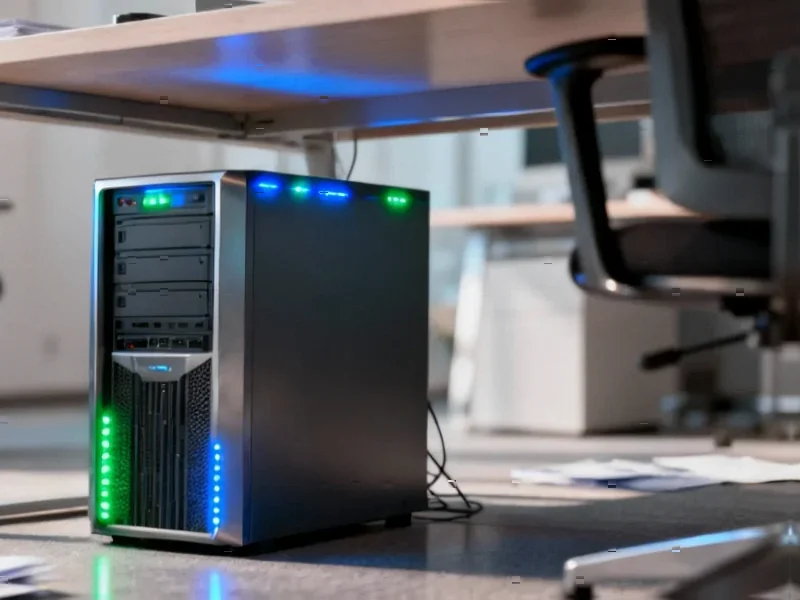According to Forbes, Seagate shares surged more than ten percent after the data storage company exceeded expectations in its fiscal Q1 2026 earnings, with revenue climbing 21% year-over-year to $2.63 billion and adjusted EPS reaching $2.61. The company shipped 182 exabytes of hard-drive capacity in the quarter ending October 3, 2025, with 159 exabytes coming from nearline drives used in cloud data centers. Seagate’s average capacity per drive increased to 14.6 terabytes, representing a 26% year-over-year rise, while the company shipped over 1 million next-generation Mozaic HAMR drives and secured qualifications from five major cloud providers. This combination of operational metrics suggests Seagate has reached a pivotal moment in capitalizing on AI-driven storage demand.
The Quiet Revolution in Storage Economics
What makes Seagate’s performance particularly significant isn’t just the revenue growth but the fundamental shift in storage economics it represents. The move toward fewer but higher-capacity drives signals a structural change in how cloud operators are building infrastructure for AI workloads. Unlike traditional data storage where density improvements provided incremental benefits, AI training and inference require massive, contiguous datasets that fundamentally change the value proposition of high-capacity drives. This isn’t merely a cyclical recovery—it’s a permanent repricing of storage value in the AI era.
How This Reshapes the Competitive Landscape
Seagate’s success with Mozaic HAMR technology creates significant barriers for competitors. The fact that five major cloud providers have qualified the platform—with another hyperscaler testing the next generation—indicates that Seagate has secured a multi-year advantage in the high-margin enterprise segment. While Western Digital and Toshiba continue to compete in the storage market, the HAMR technology platform represents a technological moat that cannot be easily bridged. The years-long qualification processes for hyperscale customers mean that even if competitors catch up technologically, they face significant time-to-market disadvantages.
Ripple Effects Across the Storage Supply Chain
The concentration of demand toward higher-capacity drives creates winners and losers throughout the storage ecosystem. Component suppliers capable of delivering the advanced materials and precision manufacturing required for HAMR technology will benefit, while traditional drive component manufacturers may struggle to adapt. More importantly, the shift toward fewer but larger drives changes the fundamental economics of data center construction—potentially reducing the physical footprint requirements for cloud operators while increasing the capital efficiency of their storage investments. This could accelerate the consolidation of cloud infrastructure among the largest players who can afford these technological transitions.
The Sustainability Question
While the current numbers are impressive, the critical question for investors is whether this represents a sustainable trend or another peak in the notoriously cyclical storage industry. The qualification of multiple hyperscale customers and the production milestone of 1 million Mozaic drives suggest this is different from previous cycles. However, the storage industry has historically been vulnerable to capacity overshoots and price wars once demand patterns become clear. The key differentiator this time may be the specific technical requirements of AI workloads, which favor advanced technologies like HAMR that have significant barriers to entry.
Broader Implications for Tech Infrastructure
Seagate’s performance signals a broader trend across tech infrastructure: specialized hardware is becoming increasingly valuable in the AI era. Just as NVIDIA’s GPUs created a new computing paradigm, advanced storage technologies are becoming critical bottlenecks in AI deployment. This suggests we’re entering a period where vertical specialization in hardware may outperform horizontal platform strategies. Companies that control key enabling technologies for AI infrastructure—whether in computing, networking, or storage—may command premium valuations as the AI buildout continues.




